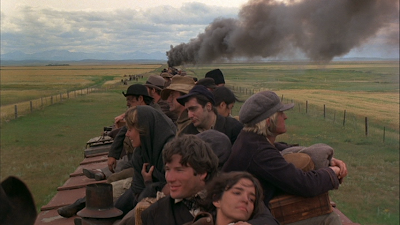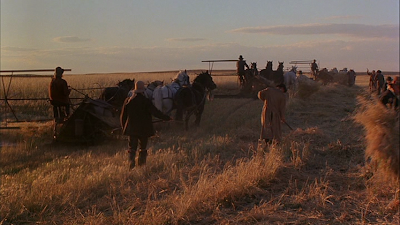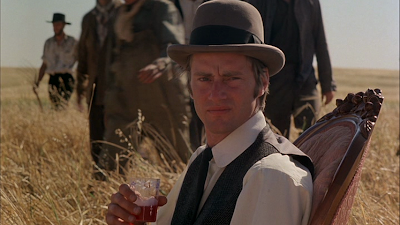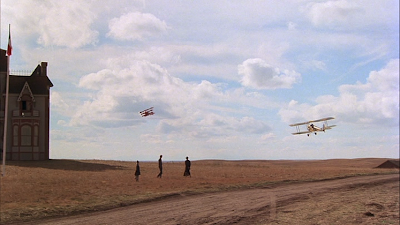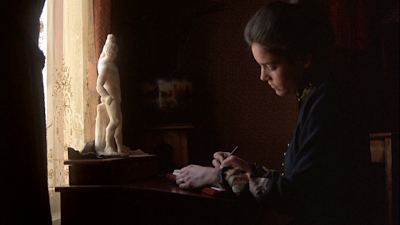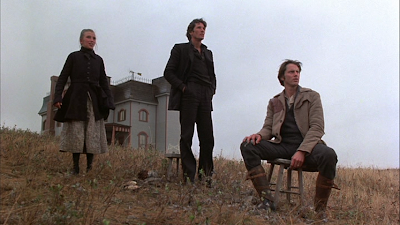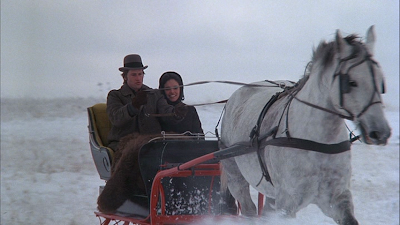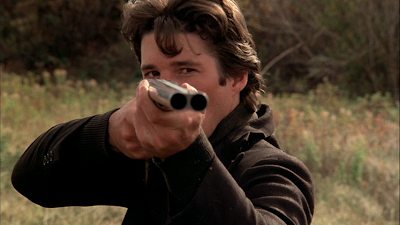
UGETSU
A film by Kenji Mizoguchi
Year : 1953
Japanese with English sub titles
Run time: 94 mins
25th July 2010; 5.45pm
Perks Mini Theatre, Perks School
http://konangalfilmsociety.blogspot.com/
A fifteen minutes documentary on
'UGETSU' by noted Japanese film maker
Masahiro Shinoda will follow the main screening

Two brothers, one consumed by greed, the other by envy. In a time when the land is savaged by marauding armies, they risk their families and their lives to pursue their obsessions. Kenji Mizoguchi's "Ugetsu" (1953) tells their stories in one of the greatest of all films -- one which, along with Kurosawa's "Rashomon," helped introduce Japanese cinema to Western audiences.
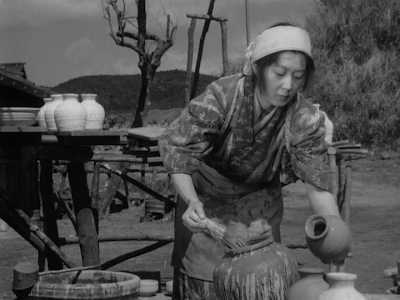
The heroes are rough-hewn and consumed by ambition, but the film style is elegant and mysterious, and somehow we know before we are told that this is a ghost story.

The opening shot is one of Mizoguchi's famous "scroll shots," so named for the way it pans across the landscape like a Japanese scroll painting. We see a village, the roofs of the rude houses weighed down by tree branches to keep them from blowing away in the wind. We meet Genjuro (Masayuki Mori), a potter, and his brother Tobei (Eitaro Ozawa), a farmer.

Ugetsu Monogatari is an exquisitely realized, serenely composed allegorical film on love, greed, and betrayal. Kenji Mizoguchi's seamless fusion of poetic realism and surreal mysticism creates a rarefied atmosphere that is paradoxically beautiful and austere, redemptive and tragic, symbolizing Genjuro's coexistence between the physical and supernatural realm - a reflection of the duality of the human soul.

Chronologically, the protracted feudal war surrounds every villager with the pervasive specter of death.

Episodically, Mizoguchi uses an overhead shot of a woman dressed in a soft, fluttering white kimono to introduce us to the transcendental Lady Wakasa. Genjuro passes through a series of open and screened spaces at the Kutsuki mansion, creating a visual dichotomy of physical reality and ethereal shadows, before his formal introduction to Lady Wakasa.
 Inevitably, the tortured Genjuro is forced to confront his beguiling temptress - a metaphor for the dark passion of the soul - and returns to his fractured, haunted past: a diligent, simple potter, inspired by the love of his devoted wife.
Inevitably, the tortured Genjuro is forced to confront his beguiling temptress - a metaphor for the dark passion of the soul - and returns to his fractured, haunted past: a diligent, simple potter, inspired by the love of his devoted wife.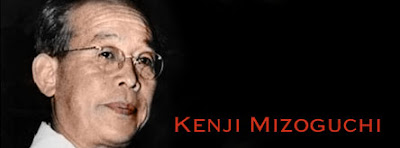
Mizoguchi (1898-1956) was famous for the theory that one scene should equal one cut, although sometimes he made exceptions. Yasujiro Ozu had the same theory, with the difference that Ozu's camera never moved in his later films, while Mizoguchi's style was constructed around flowing, poetic camera movement. Consider a scene in Ugetsu where Lady Wakasa visits Genjuro as he is bathing in an outdoor pool, and as she enters the pool to join him, water splashes over the side and the camera follows the splash into a pan across rippling water that ends with the two of them having a picnic on the grass.
Born in Tokyo, in 1898, Mizoguchi was the middle child of a roofer/carpenter. Mizoguchi studied painting at the Aohashi Western Painting Research Institute, Tokyo. In 1922, Mizoguchi was hired as an assistant director for Osamu Wakayama at Nikkatsu Studios. The Japanese film industry was changing rapidly when Mizoguchi entered it, Kabuki-inspired movies of the 1910s were giving way to those inspired by Western films. Mizoguchi, who became a full-fledged director in 1923, quickly showed an enthusiasm for novelty and the West.
As his style matured, his work underwent an astonishing transformation. This former advocate of the faddish and the radical began creating finely crafted period pieces centered on downtrodden women. To be sure, Mizoguchi's metamorphosis was hastened in no small measure by growing political oppression during the 1930s. One of his few contemporary dramas during this time, Osaka Elegy, was banned by the military government in 1940.
Mizoguchi populated his films with marginalized women such as geishas, barmaids, and mistreated housewives. But unlike Naruse's proud, willful heroines who toil for an elusive dignity, Mizoguchi's women selflessly devote themselves to the objects of their love. Characters such as Taki in Taki no Shiraito or Otoku in Story of the Late Chrysanthemums willingly destroy themselves to enable success for their men. The Chinese maid in Empress Yang Kwei Fei molds herself into the king's vision of perfection and then calmly walks to her death to save his life. Mizoguchi's heroines blame no one during their headlong trajectory toward destruction; they seem to transcend the horrors they endure
In his later films, Mizoguchi couched these tragic tales in a quiet lyricism that evoked the impermanence of human life. Like a traditional Chinese scroll painting that depicts unfolding human drama in the midst of an overwhelming landscape, Mizoguchi's camera lingers on the stillness of a natural setting or the passing of a moment, rather than on the machinations of plot. Individual humans seem barely consequential: they work, suffer, love, and die beneath a larger, unchanging order.
In the 1950s, Mizoguchi reached his creative zenith with masterpiece after masterpiece, including The Life of Oharu, Sansho the Bailiff, Chikamatsu Monogatari, and Ugetsu, often considered one of the most beautiful films ever made. Mizoguchi died, a devout Buddhist, in 1956.
(Source: Internet)



